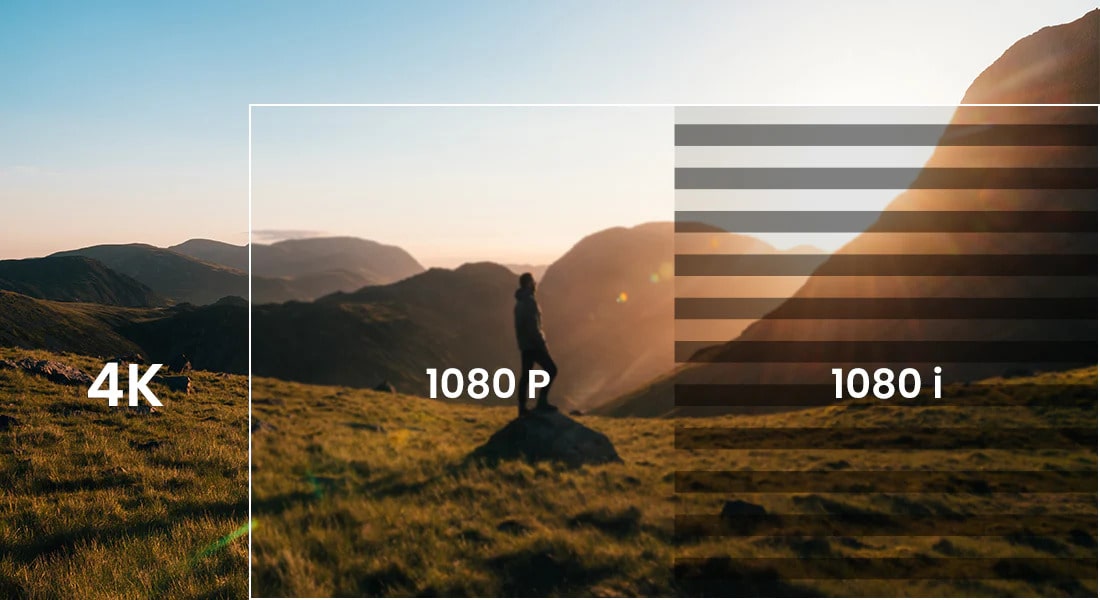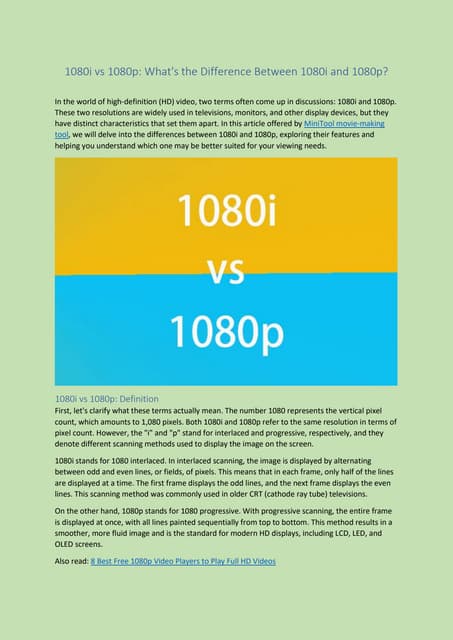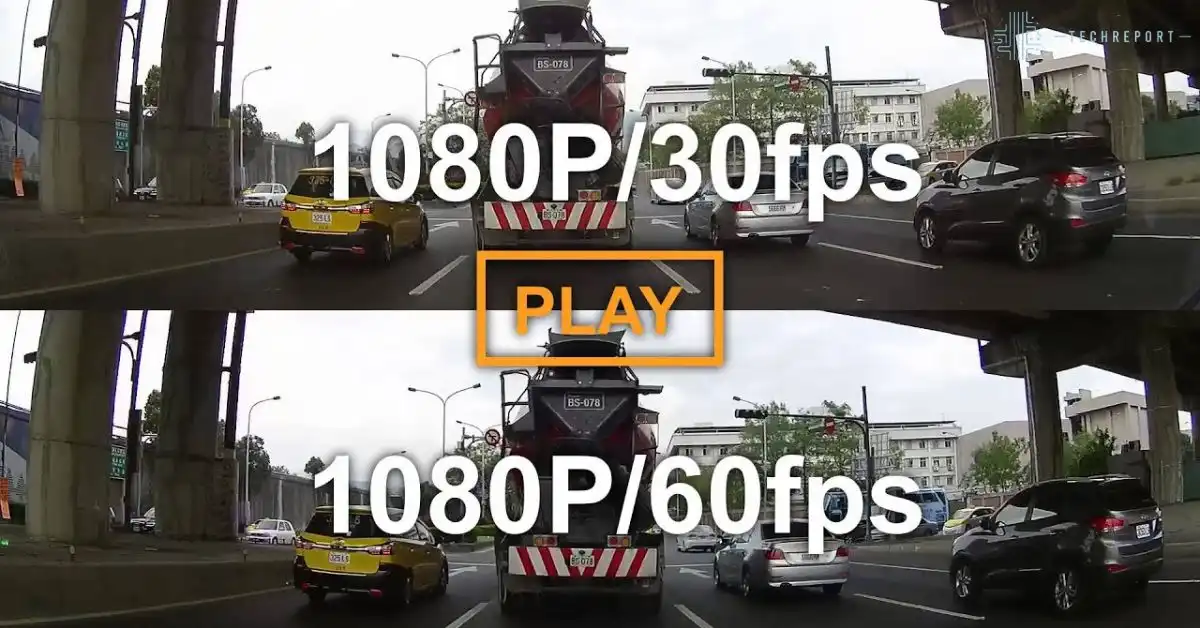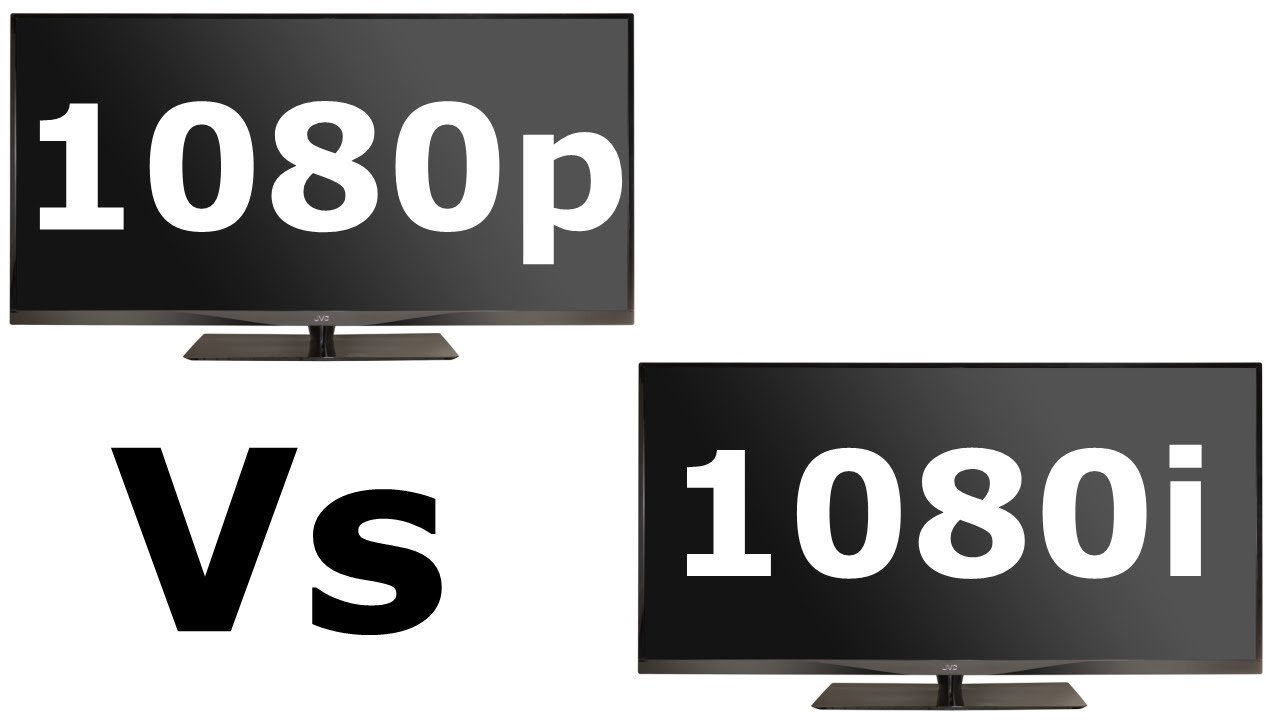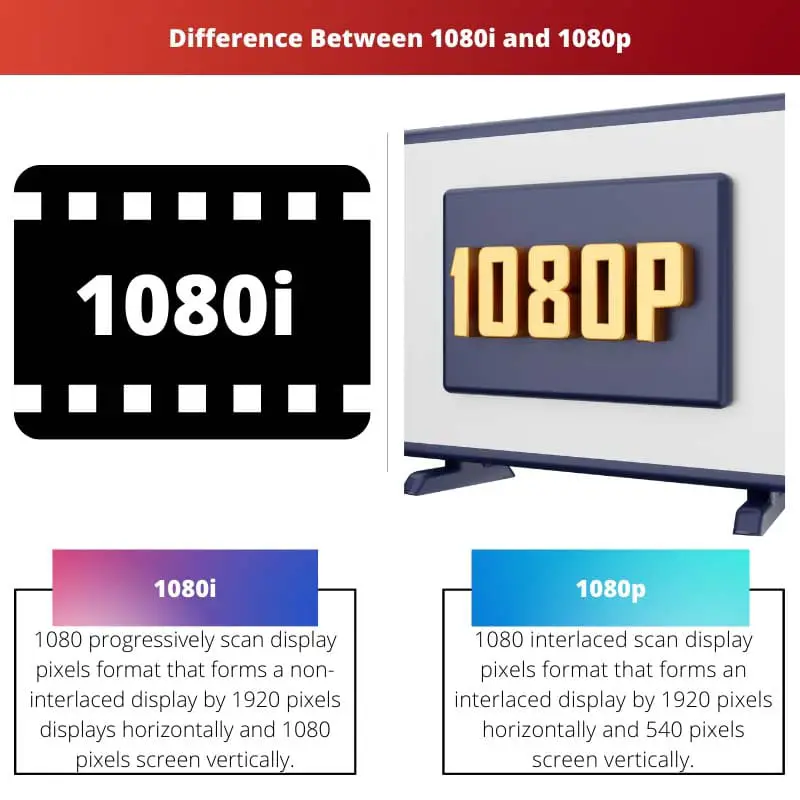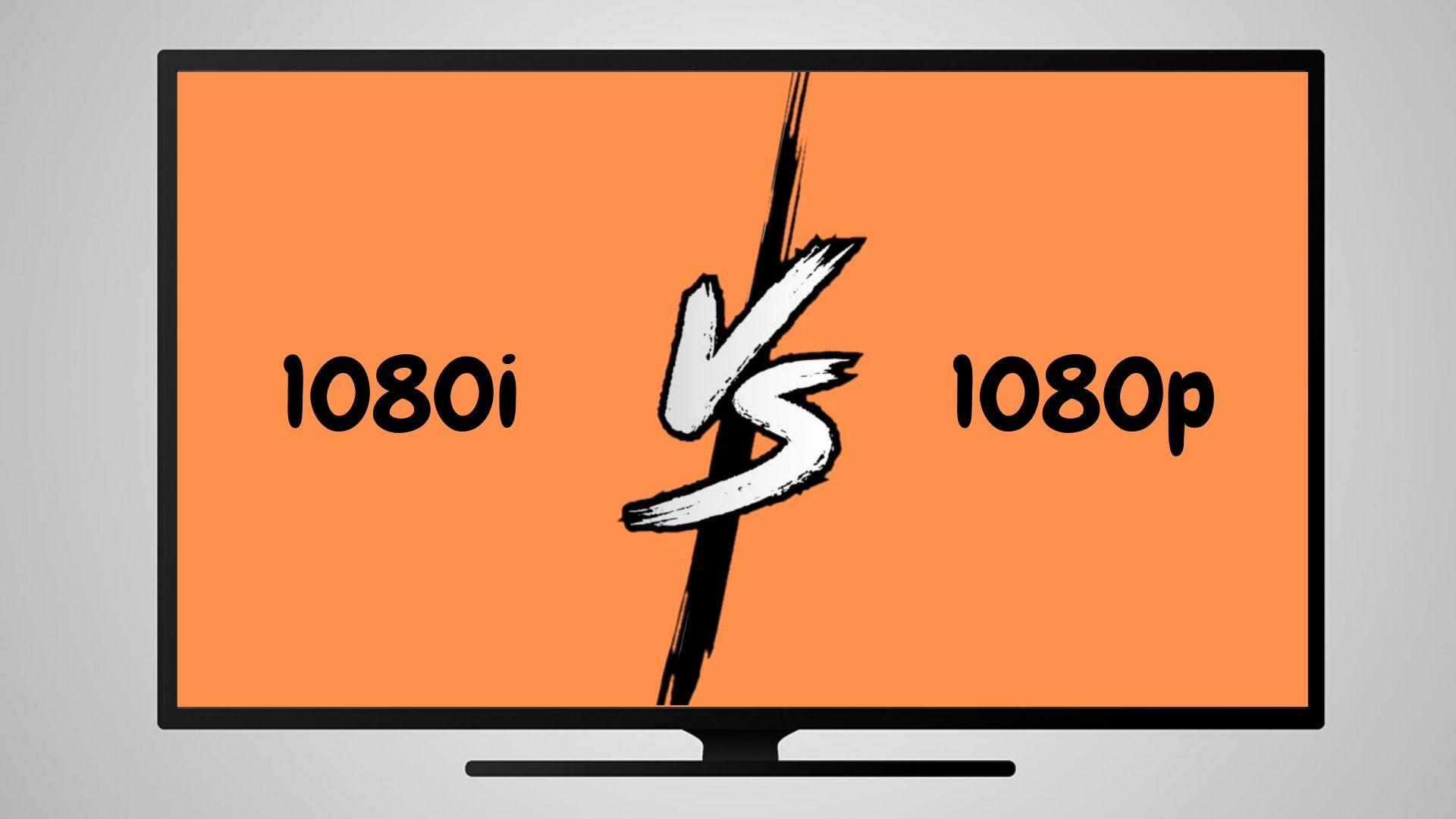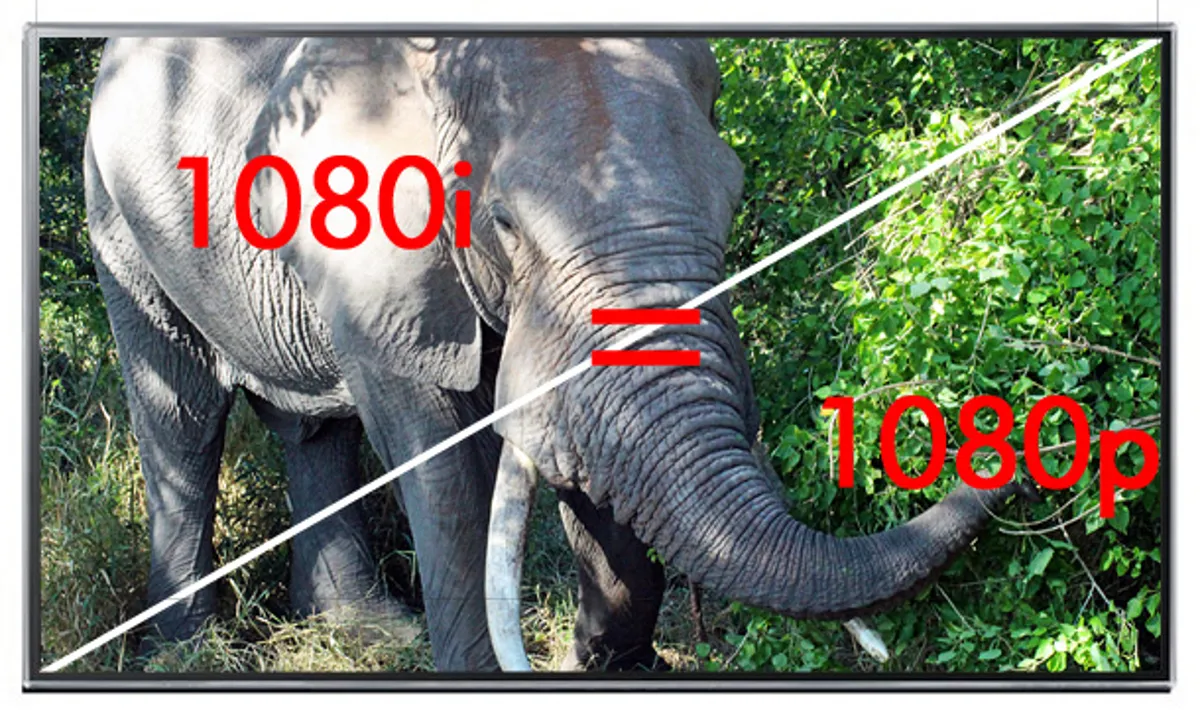What Is Difference Between 1080p And 1080i
/1080i-vs-1080p-835d2ef588d14d61b68ad6c1ed0b9fbc.jpg)
Ever heard someone brag about their TV being "1080p" and wondered if that's some secret handshake you missed? Don't worry, it's not a password to the cool kids club. It just describes how your TV shows you pictures.
Let's break down the difference between 1080p and its cousin, 1080i, without needing a decoder ring. Think of them as two different ways to paint a picture, but with slightly different speeds.
The "p" Stands for Progress! (Progressive Scan)
1080p is all about progressive scanning. Imagine a painter meticulously filling in every single line, one after the other, to create a complete, perfect picture.
That's 1080p. It draws all 1080 lines of the picture, one after another, in one go. No skipping, no waiting, just pure, unadulterated image bliss.
The result? A smoother, clearer picture, especially when things are moving fast. Think action movies, sports games, or your hyperactive dog chasing squirrels in the backyard.
"i" For... Interlaced Intrigue (Interlaced Scan)
Now, 1080i is a little more... economical. The "i" stands for interlaced. It’s like a painter who only paints every other line, then comes back later to fill in the gaps.
It draws all the odd-numbered lines first, then the even-numbered lines. This happens so quickly, your eyes usually can't tell the difference. Usually.
However, if there's a lot of movement, you might see a slight "combing" effect, like tiny horizontal lines flickering across the screen. It's like your TV is briefly struggling to keep up with the action.
Why did "i" even exist?
Back in the day, when TV technology was still wearing bell bottoms, sending a full 1080p picture was too much data for the available bandwidth.
So, clever engineers came up with interlacing as a way to transmit a relatively high-resolution picture without overwhelming the system. Think of it as the TV's version of a mullet: business in the front, party (or, in this case, data savings) in the back.
Nowadays, with better technology, 1080p has become the standard, and 1080i is becoming a bit of a relic.
The Hilarious Truth: You Might Not Even Notice!
Here's the funny part: unless you're a video enthusiast with a hawk-like eye, you might not even be able to tell the difference between 1080p and 1080i on a smaller screen, or from a typical viewing distance.
It's like trying to distinguish between two slightly different shades of beige. Sure, one might be *technically* superior, but in everyday life, who really cares?
The size of your screen, how far away you sit, and the quality of the source material all play a bigger role in your viewing experience than just the "p" or "i" after 1080.
So, next time someone tries to impress you with their knowledge of resolution, you can casually drop the "interlaced scanning" bomb and watch their jaw drop. Just kidding! (Mostly.)
Ultimately, both 1080p and 1080i offer a pretty decent picture. But now you know the secret difference. Go forth and enjoy your binge-watching!
And remember, the most important part is the story, not the tech specs. So grab some popcorn, settle in, and enjoy the show, regardless of whether it's in glorious 1080p or slightly-less-glorious 1080i!



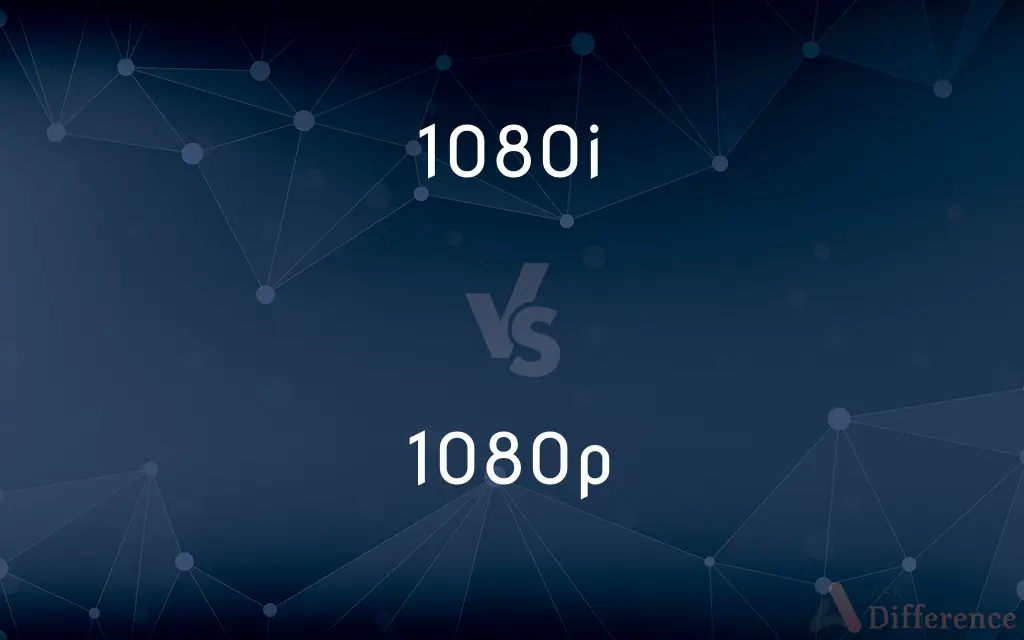
/720p-vs-1080i-vs-1080p-845771411ed441b386f2e8f24a55b329.jpg)

